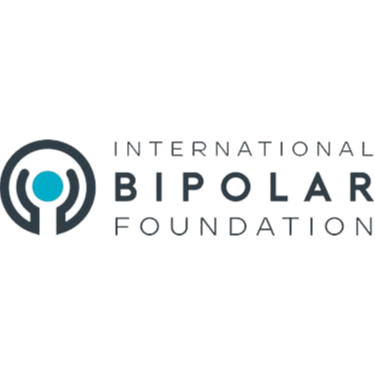We can learn and change in a state of pain and suffering, or we can learn and change in a state of joy and inspiration. In truth, we’re divinely wired to be the creators of our lives. - Joe Dispenza
YOU MIGHT ALSO LIKE
CLEAR ALL
BY TOPIC
BY TEACHER
BY TYPE
FILTER

TOPIC
- Self-Mastery (17)
- Self-Realization (17)
- Meditation (14)
- Awareness (13)
- Mindfulness Meditation (13)
- Building Character (11)
- Self-Discovery (10)
- Manifestation (9)
- Self-Actualization (9)
- Buddhism (8)
- Compassion (7)
- Values (7)
- Autoimmune Disease (6)
- Consciousness (6)
- Empathy (6)
- Identity Shifts (6)
- Work-Life Balance (6)
- Altered States (5)
- BIPOC Well-Being (5)
- Brain Health (5)
- Dementia (5)
- Emotional Intelligence (EQ) (5)
- Focus (5)
- Leadership (5)
- Mind-Body Connection (5)
- Parenting (5)
- Presence (5)
- Psychedelic Research (5)
- Self-Development (5)
- Self-Limiting Beliefs (5)
- Self-Reflection Practices (5)
- Self-Worth (5)
- Authenticity (4)
- Caregiver Well-Being (4)
- Communication Skills (4)
- Depression (4)
- Human Potential (4)
- Inner Peace (4)
- Neuroplasticity (4)
- Racism (4)
- Self-Acceptance (4)
- Self-Care (4)
- Self-Expression (4)
- Self-Love (4)
- Spiritual Development (4)
- Spiritual Growth (4)
- Spiritual Life (4)
- Tibetan Buddhism (4)
- Breathwork (3)
- Child’s Trauma (3)
- Chronic Health Conditions (3)
- Cross-Cultural Dynamics (3)
- Ego (3)
- Emotional and Mental Health (3)
- Happiness (3)
- Illness and Injury (3)
- Inner Life (3)
- Neurodiversity (3)
- Polyvagal Theory (3)
- Racial Identity (3)
- Relationship Challenges (3)
- Self-Compassion (3)
- Self-Healing (3)
- Stress (3)
- Suffering (3)
- Synesthesia (3)
- Transitions (3)
- Yoga (3)
- Acceptance (2)
- Aging (2)
- Anger (2)
- Anxiety (2)
- Athlete Well-Being (2)
- Autism (2)
- Belonging (2)
- Black Well-Being (2)
- Buddha Nature (2)
- Community Healing (2)
- Conscience (2)
- Ego Dissolution (2)
- Enlightenment (2)
- Growth Mindset (2)
- Guided Meditation (2)
- Habit Formation (2)
- Habits of Mind (2)
- Imagination and Creativity (2)
- Inflammation (2)
- Intention (2)
- Ketamine (2)
- Letting Go (2)
- Loneliness (2)
- LSD (2)
- Memory (2)
- Motivation (2)
- Negative Self-Talk (2)
- Othering (2)
- Positive Self-Talk (2)
- Problem Solving (2)
- Racial Discrimination (2)
- Racial Justice (2)
- Self-Control (2)
- Shame (2)
- Speaking Your Truth (2)
- Stress Management (2)
- Transgender Well-Being (2)
- Trauma (2)
- Vulnerability (2)
- Young Adult Well-Being (2)
- Adaptability (1)
- Addiction Recovery (1)
- Body Mapping (1)
- Body Scan Meditation (1)
- Building Culture (1)
- Burnout (1)
- Child’s Emotional Growth (1)
- Chronic Anxiety (1)
- Climate Change (1)
- Clinical Depression (1)
- Comparing Belief Traditions (1)
- Compassion Meditation (1)
- Confidence (1)
- Courage (1)
- Criticism and Rejection (1)
- Cross-Cultural Parenting (1)
- Curiosity (1)
- Death and Dying (1)
- Decision Making (1)
- Dharma (1)
- Diamond Approach (1)
- Diet and Nutrition (1)
- Digital Life (1)
- Disabled Well-Being (1)
- Disconnection (1)
- DMT (1)
- Dreamwork (1)
- Ecospirituality (1)
- Embodiment (1)
- Empowerment (1)
- Energy Healing (1)
- Entrepreneurship (1)
- Epigenetics (1)
- Exercise (1)
- Faith (1)
- Family Dynamics (1)
- Fear (1)
- Finding Meaning (1)
- Freedom (1)
- Friendship (1)
- Gender Identity (1)
- Global Challenges (1)
- Goal Setting (1)
- God (1)
- Gratitude (1)
- Grit (1)
- Guilt (1)
- Healthy Eating (1)
- Hinduism (1)
- Honoring Emotion (1)
- Hypnosis (1)
- Incarceration (1)
- Indigenous Well-Being (1)
- Inner Strengths (1)
- Insight (Vipassana) Meditation (1)
- Journaling (1)
- Karma (1)
- Kindness (1)
- Kundalini Yoga (1)
- Latinx Well-Being (1)
- LGBTQIA Sexuality (1)
- LGBTQIA Well-Being (1)
- Life Challenges (1)
- Life Force Energy (1)
- Living as an Empath (1)
- Living with Illness (1)
- Longevity (1)
- Love (1)
- Lovingkindness (1)
- Lovingkindness Meditation (1)
- MDMA (1)
- Military to Civilian Re-entry (1)
- Neoshamanism (1)
- Neuropsychology (1)
- Nonbinary Well-Being (1)
- Offering Support to Others (1)
- Peak Performance (1)
- Perception (1)
- Physical Health (1)
- Positive Psychology (1)
- Pregnancy and Childbirth (1)
- Productivity (1)
- Psilocybin (1)
- Psychoanalysis (1)
- Quantum Physics (1)
- Racial Healing (1)
- Relationship with Time (1)
- Resilience (1)
- Romantic Relationships (1)
- Science and Spirituality (1)
- Search for Purpose (1)
- Self-Esteem (1)
- Self-Reliance (1)
- Setting Limits and Boundaries (1)
- Shamanic Healing (1)
- Sleep (1)
- Sleep Disorders (1)
- Social Justice (1)
- Social Presence (1)
- Spiritual Awakening (1)
- Spiritual Direction (1)
- Spiritual Healing (1)
- Spiritual Practices (1)
- Spirituality and Politics (1)
- The Divine (1)
- Trauma Healing (1)
- Trust (1)
- Unconscious Bias (1)
- Veteran Well-Being (1)
- Visualization (1)
- Well-Being (1)
- Whiteness (1)
- Willpower (1)
- Women’s Well-Being (1)
- Work Challenges (1)
- Yoga Therapy (1)
FILTER

TEACHER
- Jon Kabat-Zinn (3)
- Joseph Goldstein (3)
- Mark Manson (3)
- Miles Neale (3)
- Stephen Porges (3)
- Amishi Jha (2)
- David Eagleman (2)
- don Jose Ruiz (2)
- Ellen Langer (2)
- Jay Shetty (2)
- Jill Bolte Taylor (2)
- john a. powell (2)
- Thich Nhat Hanh (2)
- Tony Robbins (2)
- Yongey Mingyur Rinpoche (2)
- A. H. Almaas (1)
- Alan Watts (1)
- Anil Seth (1)
- Arianna Huffington (1)
- Byron Katie (1)
- Chan Khong (1)
- Chögyam Trungpa (1)
- Dane Rudhyar (1)
- Daniel Gilbert (1)
- David Perlmutter (1)
- Deepak Chopra (1)
- Elena Brower (1)
- Elizabeth Stanley (1)
- Erin Clabough (1)
- Frank Ostaseski (1)
- Jacqueline Carter (1)
- James Baraz (1)
- Joe Dispenza (1)
- John C. Parkin (1)
- Judith Orloff (1)
- Karen Johnson (1)
- Kelly McGonigal (1)
- La Sarmiento (1)
- Mark Epstein (1)
- Mark Nepo (1)
- Martha Beck (1)
- Martin Seligman (1)
- Mary Oliver (1)
- Matt Kahn (1)
- Michael Bernard Beckwith (1)
- Michael Murphy (1)
- Mirabai Bush (1)
- Nicole Cardoza (1)
- Reginald Ray (1)
- Richard Davidson (1)
- Robin Carhart-Harris (1)
- Russell Brand (1)
- Sandra Ingerman (1)
- Shakti Gawain (1)
- Shauna Shapiro (1)
- Shelly Tygielski (1)
- Sister Jenna (1)
- Sri Dharma Mittra (1)
- Stan Tatkin (1)
- Steven Johnson (1)
- Sue Morter (1)
- Tara Brach (1)
- The Dalai Lama (1)
- Toni Bernhard (1)
- Willis Harman (1)
- Wim Hof (1)










